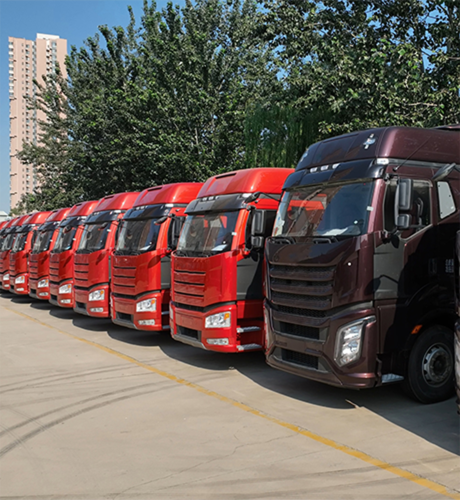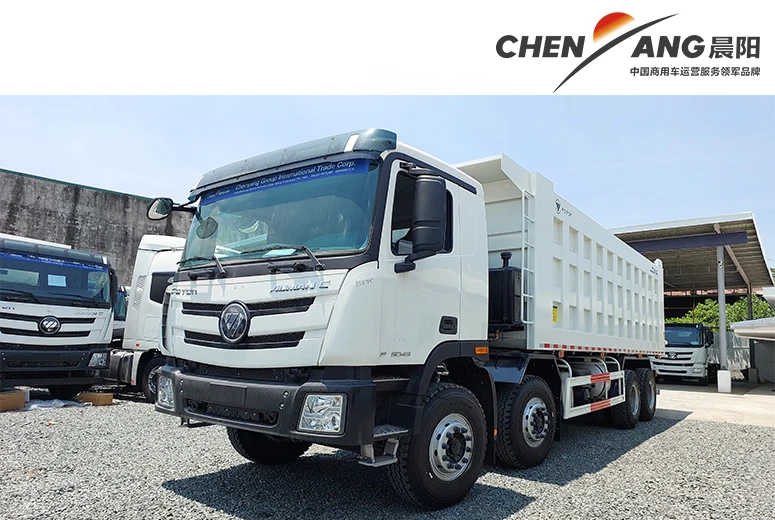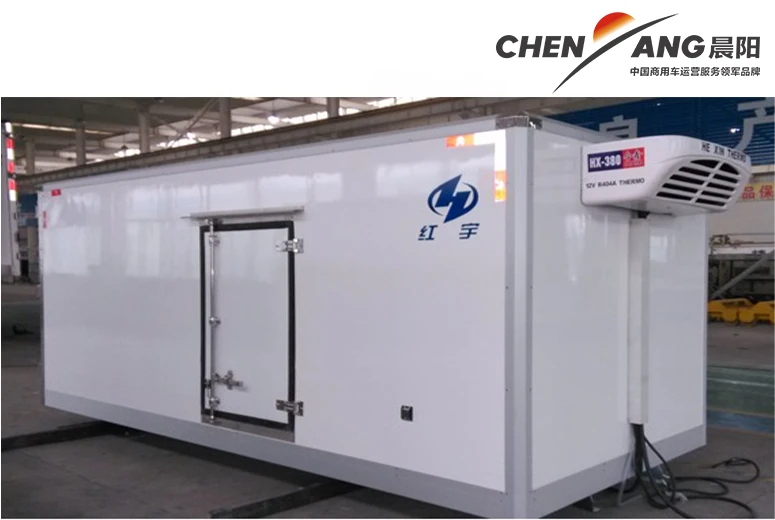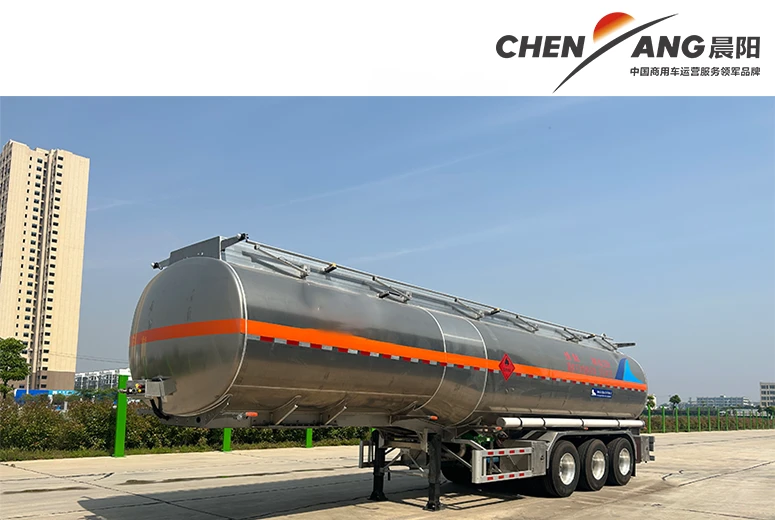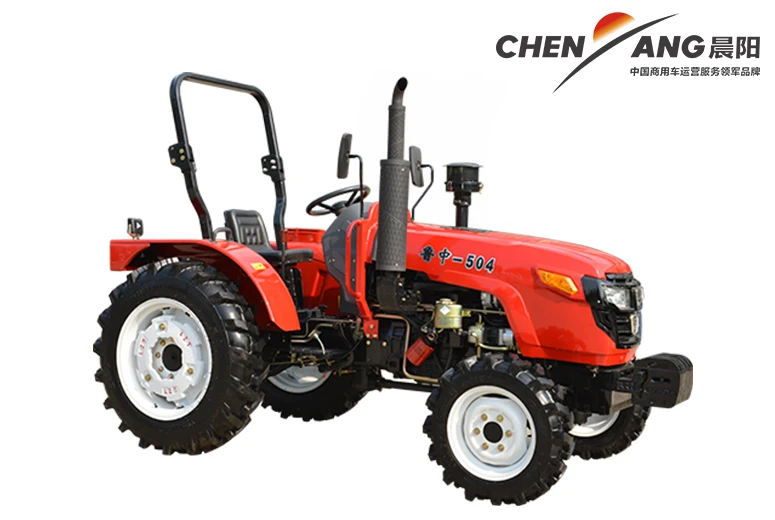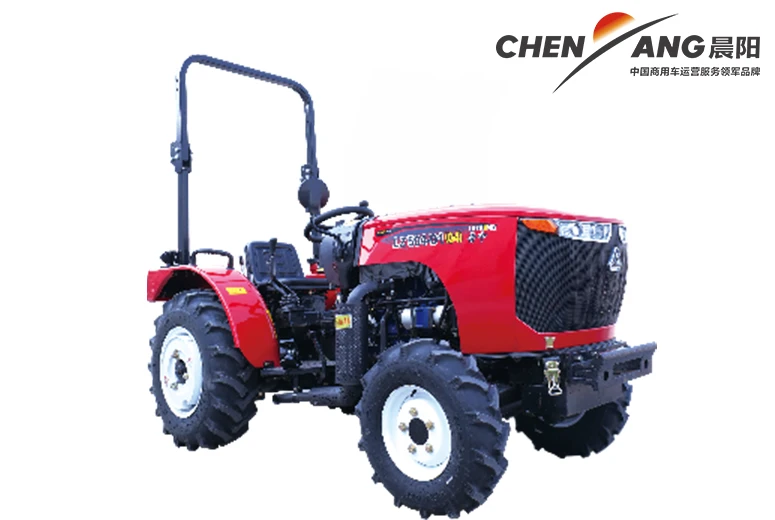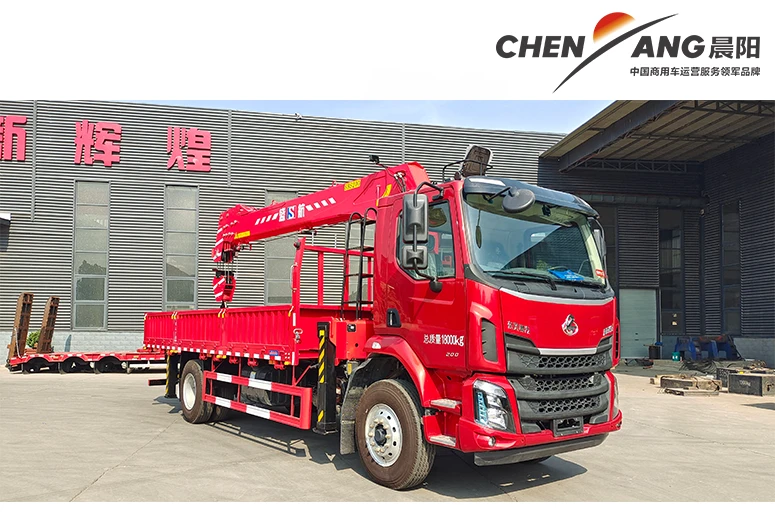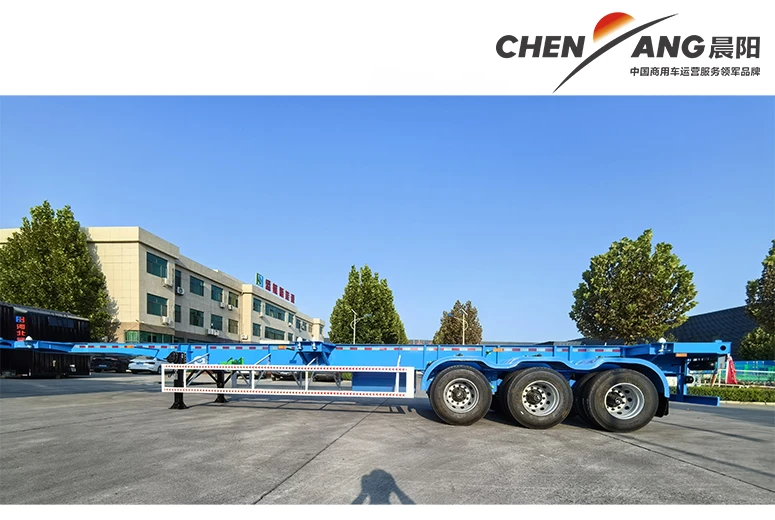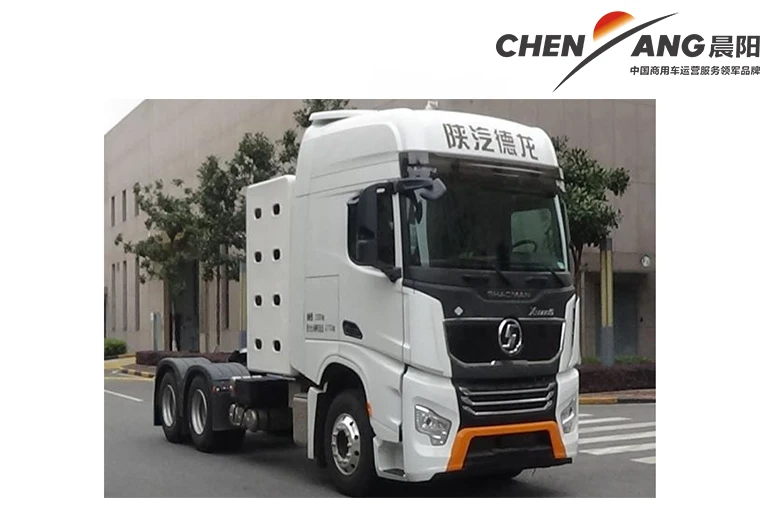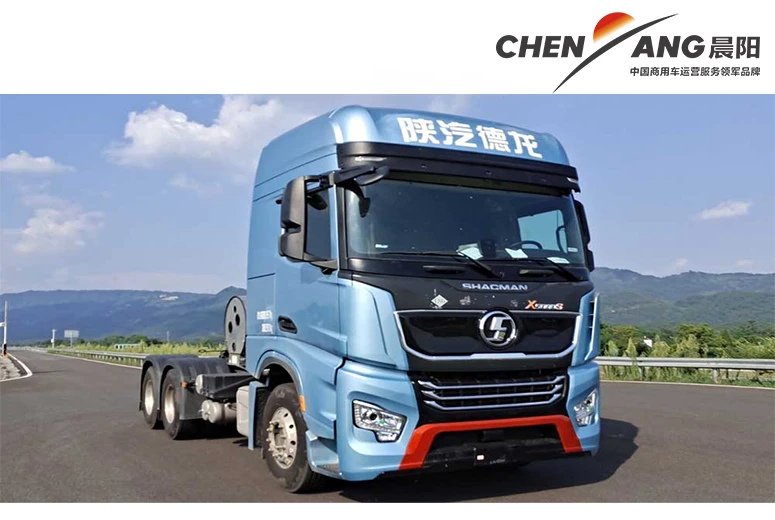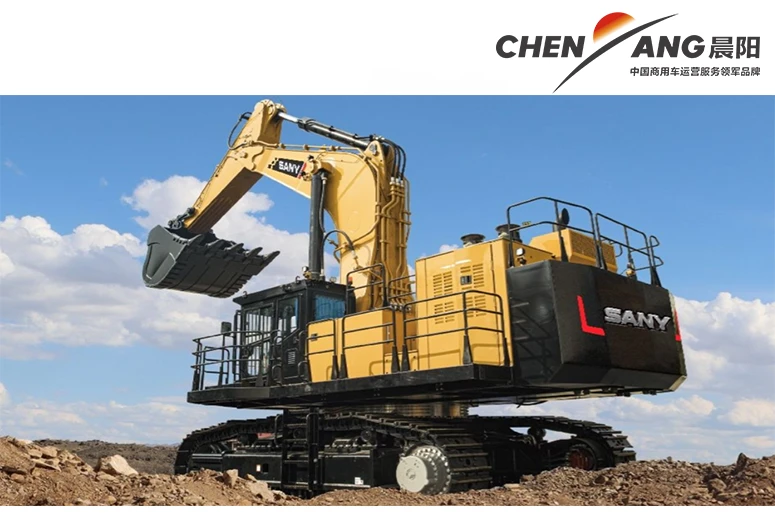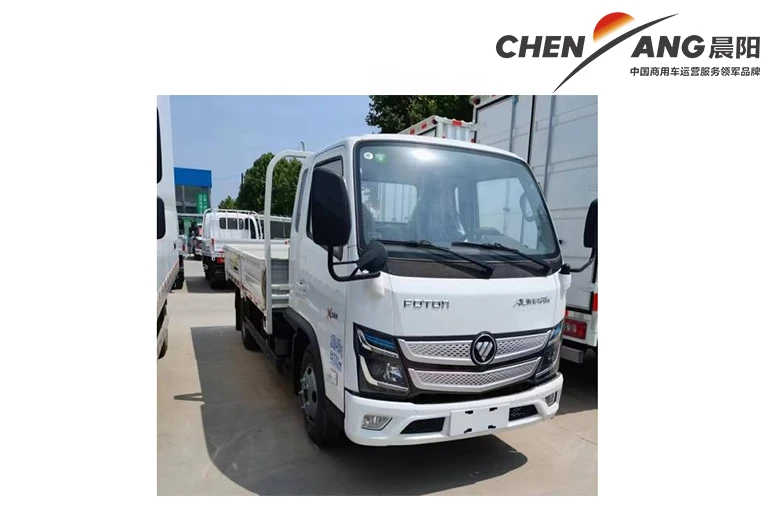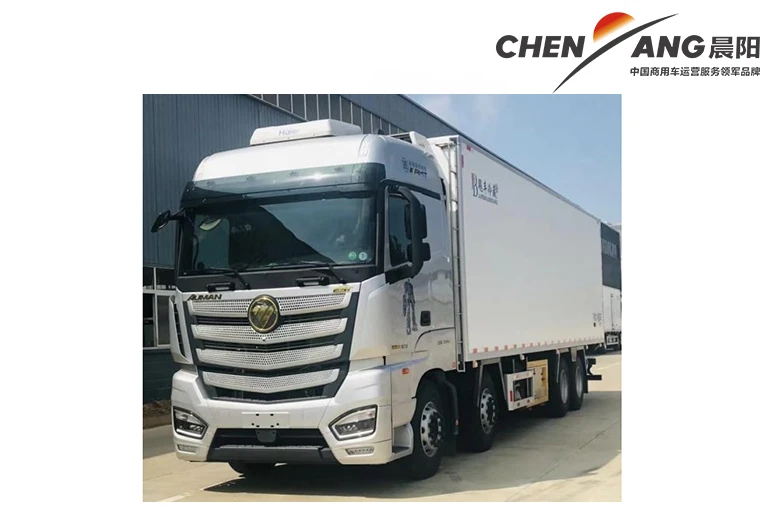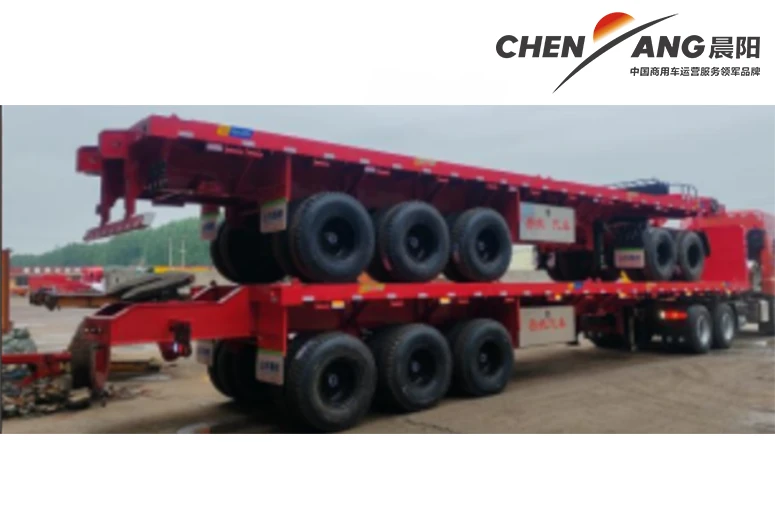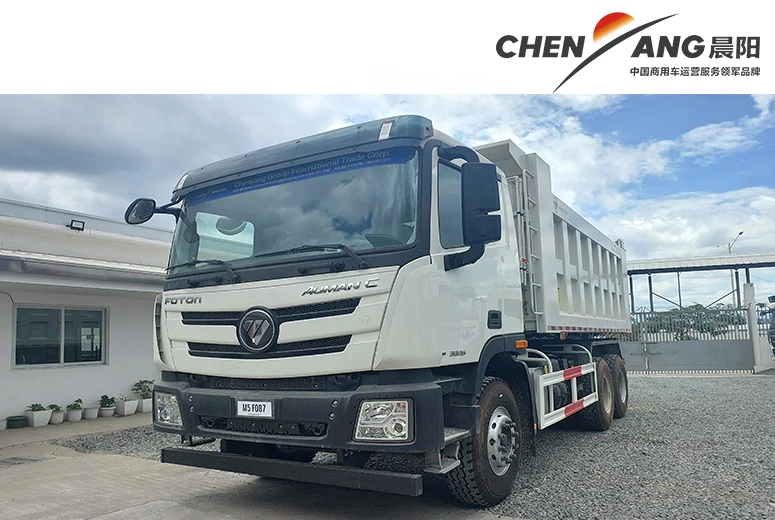High-Performance Fast Second Shaft & Third Gear Solutions
In the demanding world of commercial trucking, construction, and specialized industrial machinery, the reliability and efficiency of power transmission components are paramount. At the heart of many heavy-duty gearboxes lies a critical ensemble: the Fast Second shaft and Third gear. This combination is not merely a set of rotating parts; it represents a pinnacle of precision engineering, designed to manage immense torque, withstand brutal operational cycles, and ensure seamless power delivery. Understanding its intricacies, from material science to manufacturing excellence, is essential for anyone involved in the design, maintenance, or procurement of high-performance transmission systems.
Industry Trends and the Evolving Role of the Fast Second shaft and Third gear
The automotive and heavy equipment industries are undergoing transformative shifts driven by globalization, environmental regulations, and the relentless pursuit of efficiency. Key trends include:
- Electrification and Hybridization: While electric drivetrains gain traction, traditional mechanical components like the Fast Second shaft and Third gear continue to be vital in hybrid systems and for the substantial portion of the global fleet that remains conventionally powered. Their design must adapt to new load profiles and NVH (Noise, Vibration, and Harshness) requirements in quieter hybrid environments.
- Increased Torque Density: Modern engines, particularly in heavy trucks, are producing higher torque outputs. This necessitates gears and shafts that can transmit more power within the same or even smaller envelopes, demanding superior material strength and precise manufacturing tolerances.
- Extended Service Intervals and Durability: Fleet operators demand longer operational lifespans and reduced downtime. This puts immense pressure on component manufacturers to deliver parts like the Fast Second shaft and Third gear that can reliably perform for hundreds of thousands of miles or thousands of operating hours with minimal maintenance.
- Advanced Manufacturing Techniques: The adoption of Industry 4.0 principles, including advanced CNC machining, additive manufacturing for prototyping, and sophisticated heat treatment processes, is pushing the boundaries of what's possible in gear production, leading to higher precision and improved performance characteristics.
The role of the Fast Second shaft and Third gear is evolving to meet these challenges. Manufacturers are investing in R&D to develop new alloys, optimize gear geometry, and refine production processes to achieve unprecedented levels of strength, durability, and efficiency. This continuous innovation ensures that these critical components remain at the forefront of power transmission technology, enabling the heavy-duty machinery of tomorrow.
Technical Parameters and Specifications of the Fast Second shaft and Third gear
The performance of a Fast Second shaft and Third gear is determined by a complex interplay of material properties, geometric design, and manufacturing precision. Key technical parameters include:
- Material Composition: Typically high-grade alloy steels such as 20CrMnTiH, 18CrNiMo7-6, or SAE 8620. These materials are chosen for their excellent balance of core toughness and surface hardenability, crucial for resisting shock loads and wear.
- Heat Treatment: Carburizing followed by quenching and tempering is standard. Carburizing creates a hard, wear-resistant surface layer (case hardness) while maintaining a tough, ductile core, preventing catastrophic failure from impact or bending fatigue. Case depth, surface hardness (HRC), and core hardness are critical parameters.
- Gear Geometry:
- Module (m): Defines the size of the gear teeth.
- Number of Teeth (Z): Directly impacts the gear ratio.
- Pressure Angle (α): Typically 20 degrees, influencing tooth strength and smooth engagement.
- Helix Angle (β): For helical gears, this angle promotes smoother, quieter operation and higher load-carrying capacity compared to spur gears, though it introduces axial thrust.
- Profile Modification: Techniques like tip relief and root fillet optimization are used to improve load distribution and reduce stress concentrations, extending lifespan.
- Precision Standards: Gears are often manufactured to strict precision standards such as ISO 1328 (or its equivalent AGMA 2015 for American standards). These standards classify gears based on their accuracy, which directly correlates to noise levels, efficiency, and longevity. Common precision grades for high-performance applications range from Class 6 to Class 8.
- Surface Finish: A high-quality surface finish (low Ra value) on tooth flanks is crucial for minimizing friction, reducing wear, and prolonging lubricant life.
- Runout and Concentricity: Critical for smooth operation and preventing premature wear, ensuring the gear runs true to its axis.
Typical Specifications for a High-Performance Fast Second shaft and Third gear
| Parameter | Typical Value/Range | Significance |
|---|---|---|
| Material | 20CrMnTiH / 18CrNiMo7-6 | High strength, excellent hardenability for severe applications. |
| Surface Hardness (HRC) | 58-62 | Resistance to wear and pitting fatigue on tooth flanks. |
| Core Hardness (HRC) | 35-45 | Ductility and toughness to absorb shock loads and prevent breakage. |
| Case Depth (mm) | 0.8 - 1.5 | Influences wear resistance and bending fatigue strength. |
| Gear Accuracy Class (ISO 1328) | 6-8 | Lower number indicates higher precision; affects noise, vibration, and efficiency. |
| Surface Roughness (Ra) | ≤ 0.8 µm (on tooth flanks) | Minimizes friction and improves lubrication film stability. |
| Tensile Strength (MPa) | ≥ 1100 (after heat treatment) | Resistance to static loads and fatigue. |
| Yield Strength (MPa) | ≥ 900 (after heat treatment) | Point at which permanent deformation begins. |
| Modulus of Elasticity (GPa) | ~200-210 | Measure of stiffness, important for deflection under load. |
The Meticulous Manufacturing Process of the Fast Second shaft and Third gear
The creation of a high-quality Fast Second shaft and Third gear is a multi-stage process that combines metallurgical expertise with advanced mechanical engineering. Each step is critical to achieving the desired material properties, dimensional accuracy, and surface finish, ensuring the component's reliability and longevity.
1. Material Selection and Preparation:
- Material Sourcing: Begins with selecting high-grade alloy steel, typically in bar stock form, such as 20CrMnTiH or 18CrNiMo7-6. These materials are chosen for their specific chemical composition, which allows for optimal heat treatment response, providing a tough core and a hard, wear-resistant surface.
- Cutting: The raw material bars are cut to approximate lengths, preparing them for the forging process.
2. Forging:
- Heating: The steel blanks are heated to a precise temperature (e.g., 1100-1250°C) in an induction furnace or gas-fired furnace to make them malleable.
- Forming: Hot forging (e.g., using hydraulic presses or hammers) is employed to shape the metal close to the final geometry. This process refines the grain structure, aligning the grain flow with the stress lines of the component, which significantly enhances its strength and fatigue resistance. Forging eliminates internal voids and improves overall material density.
3. Annealing/Normalization:
- After forging, the components are subjected to annealing or normalizing heat treatment. This process relieves internal stresses induced during forging, refines the grain structure further, and improves machinability by making the steel softer and more homogeneous.
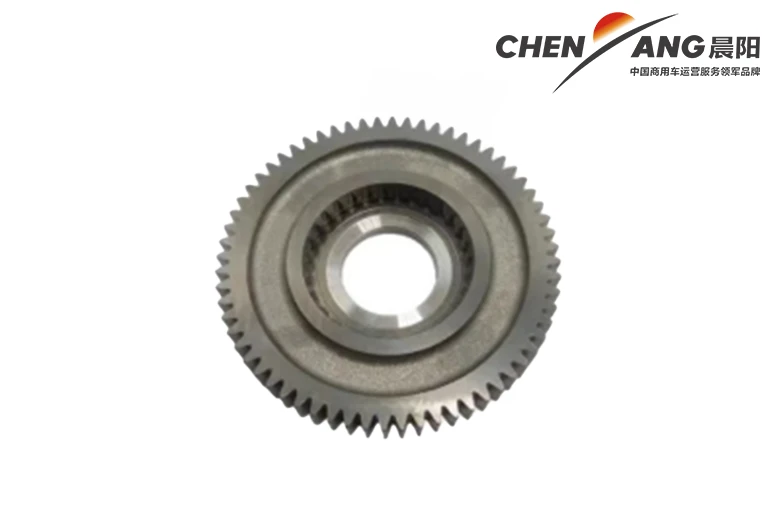
4. Rough Machining (CNC Turning/Milling):
- Using advanced Computer Numerical Control (CNC) machines, the forged blanks are machined to a near-net shape. This includes turning the shaft diameters, facing surfaces, and rough cutting the gear teeth profiles. Precision is crucial at this stage to minimize material removal in subsequent, more precise steps.
5. Gear Cutting (Hobbing/Shaping):
- Hobbing: For helical and spur gears, hobbing is a common method. A hob (a specialized cutting tool) continuously rotates and feeds into the gear blank, progressively cutting the teeth profile.
- Shaping: For internal gears or gears requiring specific tooth geometries that hobbing cannot achieve, gear shaping is used, where a cutter resembling a mating gear reciprocates to cut the teeth.
- Both processes require precise machine calibration to achieve the correct module, pressure angle, and helix angle.
6. Heat Treatment (Carburizing, Quenching, Tempering):
- Carburizing: The gears are placed in a controlled atmosphere furnace where carbon is diffused into the surface of the steel at high temperatures (e.g., 900-950°C). This creates a high-carbon surface layer (the "case") while the core remains relatively low carbon.
- Quenching: Immediately after carburizing, the components are rapidly cooled (quenched) in oil or polymer solutions. This rapid cooling transforms the high-carbon case into a hard martensitic structure, providing exceptional wear resistance and surface hardness (typically 58-62 HRC).
- Tempering: The quenched components are then reheated to a lower temperature (e.g., 150-200°C) for a specific duration. Tempering reduces brittleness in the hardened case, enhances toughness, and relieves residual stresses without significantly compromising hardness.
- Inspection: Post-heat treatment, parts undergo hardness testing (Rockwell, Vickers) and case depth measurement to ensure specifications are met.
7. Finish Machining/Grinding:
- Gear Grinding: After heat treatment, residual distortions can occur. Gear grinding (using highly precise CNC grinding machines) is essential for achieving the final high-precision gear tooth profile, accuracy class (e.g., ISO Class 6-8), and superior surface finish. This step significantly reduces noise, improves efficiency, and extends lifespan.
- Hard Turning/Grinding: Shaft journals, bearing seats, and other critical dimensions are ground or hard-turned to achieve tight tolerances and low surface roughness.
8. Surface Treatment (Optional):
- Shot Peening: Involves bombarding the surface with small spherical media. This induces compressive residual stresses on the surface, significantly improving fatigue resistance, especially at the tooth root where bending stresses are highest.
- Coatings: In certain demanding applications (e.g., anti-corrosion for petrochemical industry), specialized coatings (e.g., phosphating, black oxide, or even advanced DLC coatings) might be applied to enhance wear resistance, reduce friction, or provide corrosion protection.
9. Quality Control and Inspection:
- Throughout the process, and especially at the final stage, rigorous quality control is performed. This includes:
- Dimensional Inspection: Using CMMs (Coordinate Measuring Machines), calipers, micrometers, and gauges to verify all dimensions meet engineering drawings.
- Gear Inspection: Specialized gear metrology equipment measures tooth profile, lead, pitch, runout, and concentricity to ensure conformity to ISO/AGMA standards.
- Non-Destructive Testing (NDT): Magnetic Particle Inspection (MPI) or Dye Penetrant Inspection (DPI) are used to detect surface or subsurface cracks.
- Metallurgical Analysis: Microscopic examination of grain structure, case depth, and inclusion content.
- Functional Testing: In some cases, a subset of gears might undergo a final functional test or noise test in an assembly.
This comprehensive manufacturing and inspection protocol ensures that each Fast Second shaft and Third gear component meets the stringent quality and performance requirements for its intended heavy-duty application, offering an extended service life and superior operational reliability.
Technical Advantages and Application Scenarios
The meticulously engineered Fast Second shaft and Third gear offers several distinct advantages that are crucial for high-performance, heavy-duty applications:
- Exceptional Torque Transmission: Designed with robust gear tooth profiles and high-strength alloy steels, these components are capable of transmitting massive amounts of torque efficiently, making them ideal for heavy trucks, mining dump trucks, and large construction excavators where pulling power is paramount.
- Superior Durability and Extended Lifespan: Through precise forging, advanced heat treatment (carburizing and tempering), and precision grinding, the Fast Second shaft and Third gear achieves a hard, wear-resistant surface and a tough core. This combination ensures long operational life, often exceeding 500,000 miles in on-highway truck applications or thousands of hours in off-highway machinery, significantly reducing total cost of ownership (TCO) by minimizing replacements and downtime.
- High Efficiency and Reduced Energy Loss: The high accuracy class (e.g., ISO Class 6) achieved through grinding minimizes friction and backlash between meshing gears. This translates to higher power transmission efficiency, reducing energy loss in the drivetrain. In sectors like heavy haulage or long-distance logistics, even marginal gains in efficiency can lead to significant fuel savings (e.g., 0.5-1% improvement in fuel economy).
- Quiet and Smooth Operation: Precision gear geometry and fine surface finishes contribute to significantly lower noise and vibration levels during operation. This enhances driver comfort in commercial vehicles and reduces wear on adjacent components in industrial machinery, improving overall system reliability.
- Corrosion and Wear Resistance: While primarily focused on mechanical properties, the selected materials and potential post-processing (like phosphating or specialized coatings) can offer enhanced resistance to environmental factors, which is beneficial in harsh operating environments such as dusty mining sites, corrosive atmospheres in petrochemical plants, or high-humidity conditions in marine applications.
Typical Application Scenarios:
- Heavy-Duty Commercial Vehicles: The primary application. Found in manual and automated manual transmissions (AMTs) of Class 8 trucks, buses, and vocational vehicles (e.g., refuse trucks, fire trucks). They are critical for smoothly engaging higher gears, enabling efficient cruising and optimal fuel consumption.
- Construction Machinery: Essential in excavators, bulldozers, wheel loaders, and graders, where robust power delivery and durability are non-negotiable for demanding digging, lifting, and pushing operations.
- Mining Equipment: Used in large haul trucks, drills, and conveying systems, operating under extreme loads, high dust, and remote conditions where component failure is costly and dangerous.
- Agricultural Machinery: Employed in high-horsepower tractors and combines, providing reliable power to drive implements and navigate varied terrain.
- Industrial Transmissions: Applicable in fixed industrial gearboxes used in steel mills (metallurgy), power generation, pulp and paper, and heavy manufacturing, where continuous, high-torque operation is required. For instance, in a large industrial mixer for the chemical or petrochemical industry, a durable gear set ensures consistent operation and prevents costly process interruptions.
In a scenario requiring precise speed control and high load capacity, such as a large-scale pumping station for water supply and drainage, the robust design and precise manufacturing of the Fast Second shaft and Third gear ensure not only reliable operation but also contribute to the overall energy efficiency of the pump system by minimizing power losses within the gearbox. This directly impacts operational costs and environmental footprint.
Manufacturer Comparison and Selection Criteria
Choosing the right manufacturer for a Fast Second shaft and Third gear is as crucial as the product itself. While direct comparisons of specific manufacturers can be complex due to proprietary technologies and varied specializations, a discerning buyer should focus on key criteria:
- Expertise and R&D Capabilities:
- Does the manufacturer have a dedicated R&D team focused on gear technology, material science, and heat treatment?
- Do they utilize advanced simulation tools (e.g., FEA for stress analysis, contact mechanics for gear meshing) in their design process?
- Look for evidence of continuous innovation and improvements in gear performance and manufacturing processes.
- Quality Control and Certifications:
- ISO 9001: A fundamental certification for quality management systems.
- IATF 16949: Essential for automotive suppliers, demonstrating a robust quality management system specifically for the automotive industry.
- AS9100: For aerospace, often indicates an even higher level of precision and quality control, which can translate to other high-demand sectors.
- Evidence of rigorous in-process and final inspection, including CMM, gear metrology, NDT, and metallurgical labs.
- Manufacturing Capabilities:
- Advanced Equipment: Presence of state-of-the-art CNC machines (hobbing, shaping, grinding), sophisticated heat treatment furnaces, and surface finishing equipment.
- Vertical Integration: A manufacturer that controls more steps of the production process (e.g., forging, heat treatment, and machining in-house) often has better control over quality and lead times.
- Material Sourcing and Traceability:
- Transparency in material sourcing, ensuring high-quality, consistent raw materials from reputable suppliers.
- Full traceability from raw material batch to finished product, critical for accountability and rapid root cause analysis if an issue arises.
- Customization and Engineering Support:
- Can the manufacturer produce custom Fast Second shaft and Third gear solutions based on specific application requirements (e.g., unique gear ratios, material specifications, or interface designs)?
- Do they offer strong engineering support for design optimization, application analysis, and troubleshooting?
- Track Record and Reputation:
- Service history and years in the industry. For example, Chenyang Trucks has decades of experience manufacturing heavy-duty truck components, demonstrating long-standing expertise and reliability.
- Customer testimonials, case studies, and references from reputable clients.
- Industry recognition and awards.
- After-Sales Support and Warranty:
- Clear warranty policies on their products.
- Availability of technical support, spare parts, and service.
By thoroughly evaluating manufacturers against these criteria, procurement teams can secure Fast Second shaft and Third gear components that not only meet technical specifications but also offer long-term reliability and value.
Customization Solutions for the Fast Second shaft and Third gear
While standard Fast Second shaft and Third gear configurations serve a broad range of applications, many specialized heavy-duty systems require tailored solutions. Customization allows for optimization of performance, efficiency, and integration within unique transmission architectures. A reputable manufacturer, like Chenyang Trucks, excels in offering bespoke solutions based on specific customer needs:
- Material Selection Optimization: Beyond standard alloy steels, specific applications might benefit from ultra-high-strength steels for extreme loads, or specialized surface treatments (e.g., nitriding, carbonitriding) for enhanced wear or corrosion resistance in particular environments (e.g., marine or chemical industries).
- Gear Geometry and Ratio Modification:
- Custom Gear Ratios: Adjusting the number of teeth on the shaft and gear to achieve precise speed and torque multiplication for specific operational profiles (e.g., optimizing for fuel efficiency in long-haul, or maximum torque for heavy-duty off-road).
- Profile Modifications: Implementing specific tooth profile modifications (e.g., helix angle changes, tooth crowning, profile relief) to manage load distribution, minimize noise, and compensate for system deflection under load.
- Heat Treatment Profiles: Fine-tuning the carburizing case depth and surface hardness to match specific load cycles and fatigue requirements. For instance, a thicker case might be ideal for applications with high impact loads, while a shallower, harder case could be chosen for pure wear resistance.
- Surface Finish and Coatings:
- Superfinishing: Achieving exceptionally low surface roughness (e.g., through isotropic superfinishing) to further reduce friction, improve lubrication, and extend pitting fatigue life, leading to greater energy savings.
- Specialized Coatings: Applying PVD/CVD coatings (e.g., TiN, DLC) for extreme wear resistance, reduced friction, or even enhanced corrosion protection in harsh operating environments.
- Integrated Designs: Designing the second shaft to incorporate additional features such as splines for other components, integral bearings, or specific mounting interfaces, thereby simplifying assembly and reducing part count for the OEM.
- Weight Optimization: For applications where weight is critical (e.g., aviation or high-performance racing components, although less common for heavy-duty truck gears), design optimization through topology analysis and material removal in non-critical areas can reduce mass without compromising strength.
The process for customization typically involves a detailed consultation, where engineers analyze the client's application, performance requirements, operating environment, and budget. This collaborative approach ensures that the customized Fast Second shaft and Third gear not only fits perfectly but also delivers optimal performance and lifespan, truly becoming an integrated solution rather than just a component.
Application Cases and Customer Experience
The real-world performance of the Fast Second shaft and Third gear is best demonstrated through its successful integration into diverse heavy-duty applications, where it consistently proves its value through reliability, efficiency, and durability. Here are illustrative examples of where our Fast Second shaft and Third gear has made a tangible impact:
Case Study 1: Long-Haul Trucking Fleet Upgrade
A major logistics company operating a fleet of Class 8 heavy-duty trucks faced persistent issues with premature wear and failure of transmission gears, leading to significant downtime and maintenance costs. After extensive evaluation, they opted to replace existing components with our enhanced Fast Second shaft and Third gear. Our solution featured optimized gear geometry and a specialized heat treatment profile, designed for extended highway use.
Outcome: Within 18 months, the fleet reported a 30% reduction in transmission-related breakdowns and an average extension of component life by over 100,000 miles (approximately 160,000 km) per vehicle. This translated into substantial savings in repair costs and a measurable increase in vehicle uptime, directly boosting their operational efficiency and profitability.
Case Study 2: Mining Excavator Performance Enhancement
A leading mining operation in South America sought to improve the reliability and operational efficiency of their large hydraulic excavators, which operate 24/7 under extreme load and abrasive conditions. The original transmission gears were showing signs of excessive wear due to the constant shock loading and heavy digging cycles. Our team provided a customized Fast Second shaft and Third gear solution using a higher-grade alloy steel (18CrNiMo7-6) and an optimized case depth for superior resistance to surface fatigue and impact.
Outcome: The upgraded excavators experienced a reduction in unexpected downtime by 25%, allowing for more consistent mining operations. Furthermore, the enhanced durability of the Fast Second shaft and Third gear contributed to a perceived improvement in the overall robustness of the transmission, reducing secondary wear on bearings and seals due to smoother gear meshing.
Case Study 3: Industrial Pump System for Wastewater Treatment
For a municipal wastewater treatment plant needing to upgrade its large-scale pumping stations, reliability and energy efficiency were key concerns. Their existing pump drive systems were aging, experiencing frequent gear wear, and consuming excessive energy. We supplied a custom-engineered Fast Second shaft and Third gear for their new high-efficiency industrial gearboxes. These gears were precision-ground to ISO Class 7, ensuring minimal friction and backlash.
Outcome: The new pump systems demonstrated a 7% improvement in overall drive efficiency, leading to significant annual energy savings for the municipality. The highly precise manufacturing also contributed to remarkably quieter operation, a valuable benefit in an urban setting. The robust design provided the necessary anti-corrosion properties suitable for the humid and sometimes chemically aggressive environment of a wastewater plant, ensuring long-term stable operation.
Customer Feedback Highlights:
- "Since switching to Chenyang's Fast Second shaft and Third gear, our heavy haul fleet has seen a dramatic drop in transmission issues. The reliability is unmatched, and our mechanics report noticeably less wear during scheduled inspections." - Operations Manager, Heavy Transport Company.
- "The precision and durability of these gears have directly contributed to increased uptime for our mining equipment. In our business, every hour of operation counts, and Chenyang delivers." - Chief Engineer, International Mining Group.
- "We value the engineering support and the ability to customize. Their Fast Second shaft and Third gear was perfectly integrated into our new industrial gearbox design, contributing to our overall system's energy efficiency goals." - R&D Director, Industrial Machinery Manufacturer.
These cases exemplify our commitment to delivering high-performance, durable, and reliable Fast Second shaft and Third gear solutions that meet the rigorous demands of various heavy-duty industries, translating into tangible operational benefits for our clients.
Frequently Asked Questions (FAQ) about the Fast Second shaft and Third gear
To provide further clarity and enhance trustworthiness, here are answers to common questions regarding the Fast Second shaft and Third gear:
-
Q1: What materials are commonly used for the Fast Second shaft and Third gear, and why?
A1: High-grade alloy steels such as 20CrMnTiH, 18CrNiMo7-6, or SAE 8620 are commonly used. These materials are selected for their excellent balance of properties: a tough core that resists impact and fatigue, and a surface that can be hardened through heat treatment (carburizing) to resist wear and pitting. Their specific chemical compositions allow for optimal response to the complex heat treatment processes required for heavy-duty gears. -
Q2: How does the manufacturing process ensure the durability of the Fast Second shaft and Third gear?
A2: Durability is ensured through a multi-stage process:- Forging: Refines grain structure and aligns grain flow, enhancing strength and fatigue resistance.
- Precise Machining: Ensures dimensional accuracy and proper gear meshing.
- Carburizing & Quenching: Creates a hard, wear-resistant case while maintaining a tough core.
- Tempering: Reduces brittleness and optimizes toughness.
- Precision Grinding: Achieves high accuracy (e.g., ISO Class 6-8) and superior surface finish, reducing friction and wear.
- Rigorous QC: Each stage includes strict quality checks, including metallurgical analysis, dimensional inspection, and non-destructive testing (NDT).
-
Q3: What inspection standards does the Fast Second shaft and Third gear comply with?
A3: Our Fast Second shaft and Third gear components adhere to international quality and precision standards, including ISO 9001 for quality management systems and IATF 16949 (especially for automotive applications). Gear tooth accuracy is typically compliant with ISO 1328 (or equivalent AGMA standards), ensuring high precision and performance. Materials also comply with relevant ASTM, DIN, or JIS standards. -
Q4: What is the expected service life of a Fast Second shaft and Third gear?
A4: The service life varies significantly based on application, load cycles, maintenance practices, and lubrication quality. However, a properly designed and manufactured Fast Second shaft and Third gear for heavy-duty trucks can typically achieve a service life exceeding 500,000 miles (or 800,000 km) under normal operating conditions. In industrial or off-highway applications, this could translate to tens of thousands of operating hours (e.g., 10,000-20,000+ hours). Our design and manufacturing processes are geared towards maximizing this lifespan. -
Q5: Can the Fast Second shaft and Third gear be customized for specific applications?
A5: Yes, absolutely. We offer comprehensive customization solutions. This includes tailoring material specifications, heat treatment profiles (e.g., case depth, hardness), gear geometry (e.g., number of teeth, helix angle, profile modification), surface finishes, and even integrated shaft features to meet unique torque, speed, space, or environmental requirements of various heavy-duty transmissions. Our engineering team works closely with clients to develop optimal solutions. -
Q6: What is the typical delivery cycle for a custom Fast Second shaft and Third gear?
A6: The delivery cycle for custom Fast Second shaft and Third gear components depends on the complexity of the design, material availability, and current production schedule. For standard or slightly modified items, lead times can range from 8-12 weeks. For highly customized designs requiring new tooling or extensive R&D, it could be 16-24 weeks. We provide transparent timelines and keep clients updated throughout the manufacturing process. -
Q7: What kind of warranty and customer support do you offer for the Fast Second shaft and Third gear?
A7: We stand behind the quality of our Fast Second shaft and Third gear products with a comprehensive warranty against manufacturing defects and material failures for a specified period (e.g., 12-24 months or a certain mileage/hours of operation, depending on the application). Our dedicated customer support team and technical experts are available to provide assistance, offer maintenance advice, and address any technical queries or concerns promptly. We also offer after-sales service and spare parts availability.
Conclusion: The Enduring Excellence of the Fast Second shaft and Third gear
The Fast Second shaft and Third gear is far more than a simple mechanical component; it is a testament to precision engineering, material science, and manufacturing excellence. As the cornerstone of heavy-duty vehicle and industrial transmissions, its robust design, meticulously controlled manufacturing process, and adherence to stringent quality standards ensure unparalleled reliability, efficiency, and longevity. From the initial selection of high-grade alloy steels to advanced forging, precise CNC machining, critical heat treatment, and final grinding, every step is optimized to deliver a component capable of withstanding the most demanding operational environments.
The industry's shift towards higher torque densities, extended service intervals, and continuous efficiency gains underscores the enduring importance of continuously innovating in gear technology. The ability to customize these components for specific applications – whether it's optimizing gear geometry for fuel economy in long-haul trucking, enhancing material properties for extreme conditions in mining, or ensuring silent, efficient power transmission in industrial pump systems – further solidifies their critical role. By choosing manufacturers committed to cutting-edge R&D, stringent quality control, and comprehensive after-sales support, operators and OEMs can ensure their systems are equipped with the most durable and high-performing Fast Second shaft and Third gear components available, ultimately leading to reduced downtime, lower operational costs, and superior overall performance.
As the world continues to rely on heavy machinery for infrastructure, logistics, and resource extraction, the silent, powerful rotation of the Fast Second shaft and Third gear will remain an indispensable element driving progress forward.
References and Further Reading:
- Society of Automotive Engineers (SAE) Technical Paper: "Advances in Gear Technology for Heavy-Duty Transmissions: Material and Process Innovations." SAE International Journal of Commercial Vehicles, Vol. 12, Issue 3, 2023. Available at: https://www.sae.org/publications/journals/jcv
- American Gear Manufacturers Association (AGMA) Standards: "Gear Handbook - Design and Performance." AGMA Publications. For specific standards on gear tooth accuracy, material selection, and inspection. Available at: https://www.agma.org/publications/agma-standards
- "Heat Treatment of Gears: A Review of Modern Practices and Challenges" - Journal of Materials Processing Technology, Volume 289, 2024. For detailed insights into carburizing and quenching processes for high-performance gears. https://www.elsevier.com/journals/journal-of-materials-processing-technology
-
Plastic Industrial Pipe Fittings - Chenyang Group | Durable, Customizable, VersatileNewsAug.09,2025
-
High-Quality Plastic Industrial Pipe Fittings - Chenyang Group | Durable, CustomizableNewsAug.09,2025
-
Plastic Industrial Pipe Fittings - Durable, Customizable SolutionsNewsAug.09,2025
-
Industrial Plastic Pipe Fittings-Chenyang Group|Durable,CustomizableNewsAug.09,2025
-
Advanced Plastic Pipe Fittings - Chenyang Group | Durable, Customizable, ISO CertifiedNewsAug.08,2025
Popular products

